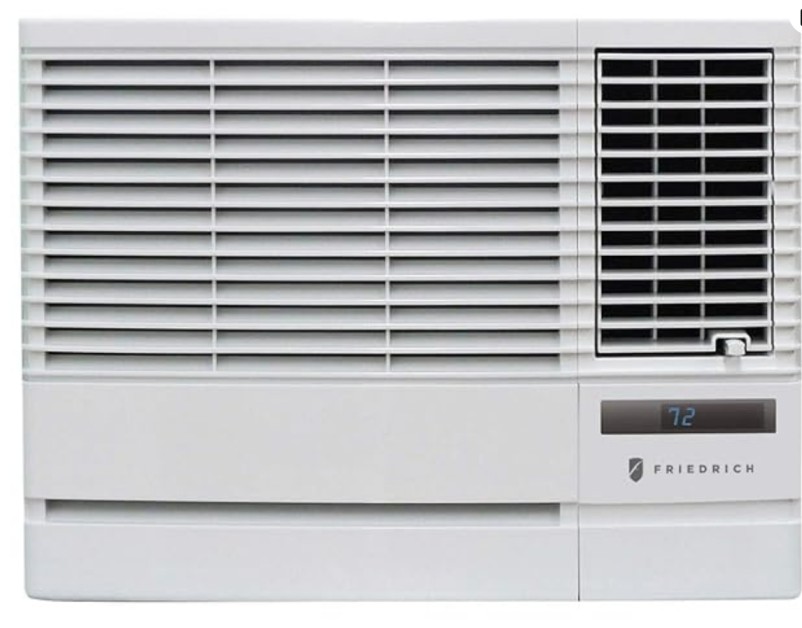As a DIY user with advanced hands-on skills and technical knowledge, troubleshooting a Friedrich mini split can be a complex yet rewarding task. This comprehensive guide will walk you through the step-by-step process of diagnosing and fixing common issues with your Friedrich mini split system.
Identifying Error Codes
The first step in troubleshooting your Friedrich mini split is to check for any error codes displayed on the remote control or indoor unit. These error codes can provide valuable insights into the specific problem you’re facing, allowing you to target the issue more effectively.
To check for error codes, carefully examine the display on your indoor unit and the remote control. Refer to the manufacturer’s documentation or online resources to decipher the meaning of each error code. This information will be crucial in guiding your troubleshooting efforts.
Verifying Power Supply

If your Friedrich mini split unit is not turning on, the issue may lie within the electrical system. Begin by checking the breaker panel and disconnect box to ensure they are properly reset. Verify that the power supply to the unit is functioning correctly by using a multimeter to test the voltage at the disconnect box.
If the power supply appears to be intact, move on to inspecting the wiring connections. Check for any loose or damaged wires, and ensure that all connections are secure and free from corrosion. If you identify any issues with the wiring, address them accordingly, taking care to follow safety protocols and manufacturer’s instructions.
Cleaning or Replacing the Air Filter
A dirty air filter can significantly restrict airflow, causing the cooled air to become trapped within the unit. This can lead to various performance issues, such as reduced cooling or heating capacity, increased energy consumption, and even system malfunctions.
Locate the air filter in your Friedrich mini split unit, typically found behind the front panel of the indoor unit. Carefully remove the filter and inspect it for any visible dirt, dust, or debris. If the filter appears dirty, clean it according to the manufacturer’s recommendations, which may involve using a vacuum cleaner, mild detergent, or replacing the filter entirely.
Troubleshooting the Remote Control
Issues with the remote control can also contribute to problems with your Friedrich mini split. Begin by ensuring that the remote control’s batteries are functioning properly. Replace the batteries if necessary, and test the remote control to see if it’s communicating with the indoor unit.
If the remote control appears to be working, check that the unit is set to the correct mode (heating or cooling) and fan speed. Ensure that the remote control is pointed directly at the indoor unit and that there are no obstructions between the two.
Detecting Refrigerant Leaks
If your Friedrich mini split is running but not delivering enough cool or warm air, there may be a refrigerant leak in the system. Look for any error codes related to refrigerant levels, and carefully inspect the refrigerant lines and connections for any signs of leakage.
If you suspect a refrigerant leak, it’s crucial to have a licensed HVAC technician address the issue. Attempting to handle refrigerant-related problems without proper training and equipment can be dangerous and may result in further damage to the system.
Addressing Water Leaks
Water leaks from the indoor unit can be a common problem with Friedrich mini splits. If you notice water dripping or pooling around the unit, take a video or photograph to help diagnose the issue.
The water leak may be caused by a clogged condensate line or a malfunctioning water pump. Carefully inspect the condensate line for any blockages or kinks, and ensure that the water pump is functioning correctly. If necessary, clean the condensate line or replace the water pump to resolve the water leak.
Utilizing the Built-in Troubleshooting Tool
Some Friedrich mini split models come equipped with a built-in troubleshooting tool that can assist you in diagnosing and addressing various issues. Refer to the manufacturer’s documentation to learn how to access and use this feature.
The built-in troubleshooting tool may provide error code interpretations, step-by-step guidance, and recommendations for resolving specific problems. Familiarize yourself with this feature and leverage it as part of your troubleshooting process.
Inspecting Connections and Grounding
Loose connections or corrupted ground paths can also contribute to problems with your Friedrich mini split. Carefully inspect all electrical connections, including those at the indoor and outdoor units, as well as the disconnect box and breaker panel.
Ensure that all connections are tight and free from corrosion. If you identify any loose or damaged connections, address them accordingly, following safety protocols and the manufacturer’s instructions.
Seeking Professional Assistance
If you’ve exhausted all the troubleshooting steps outlined in this guide and are still unable to resolve the issue with your Friedrich mini split, it’s time to seek the assistance of a professional HVAC technician.
HVAC technicians have the specialized knowledge, tools, and equipment necessary to diagnose and repair complex issues with mini split systems. They can also perform more advanced tasks, such as refrigerant recharging or system component replacement, that may be beyond the scope of a DIY user.
By following this comprehensive guide, you’ll be well-equipped to tackle a wide range of troubleshooting scenarios with your Friedrich mini split. Remember to always prioritize safety, follow the manufacturer’s instructions, and don’t hesitate to call in a professional if the issue persists or you feel uncomfortable with any aspect of the troubleshooting process.
